Law Exhibit
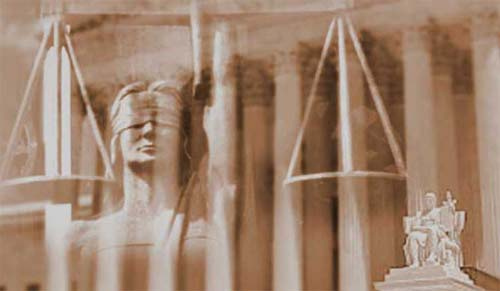
disABILITY and the Law
Throughout history there has been a relationship between individuals with disabilities and the law. Legislation to address beggars and to provide for the poor was implemented over time to address this social need. The poor, the criminal, and individuals with disabling conditions were often considered together, and were once known as the "defective, dependent and delinquent" class. As the understanding and perception of what "disability" means in society, laws to provide services and access to society began to become part of the cultural landscape. Here is a look at some moments of the intersection of disability and the Law.

449 B.C.
An early legal reference to the mentally disabled can be found in the Twelve Tables of Rome, published in 449 B.C. "If a person is a fool, let his person and his good? Be under the protection of his family or his paternal relatives, if he is not under the care of anyone." This mention of the mentally disabled in the Twelve Tables relates the need for a form of guardianship that would be provided by the family.
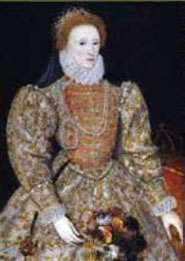
1601 Elizabethan Poor Laws
Elizabethan Poor Laws were passed from 1583 to 1601 in order to aid the deserving poor, orphaned and crippled. The 1601 law was a consolidation of prior legislation and laid some of the burden on society by charging a "poor rate" on owners of property. Queen Elizabeth's government divided the poor into three groups. The disabled poor were placed in the group labeled "helpless poor" and received a sum of money or at times food.
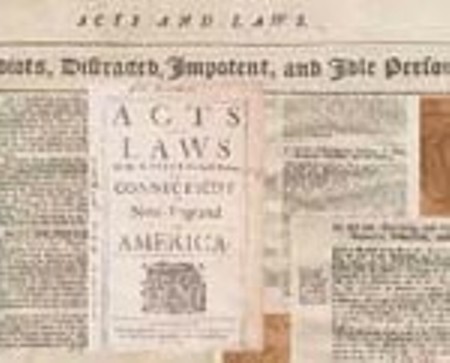
1750
The Acts and Laws of His Majesty's English Colony of Connecticut in New England in America provided An Act for Relieving, and Ordering of Idiots, Impotent, Distracted, and Idle Persons. This act stated that those considered idiots, impotent, distracted, and idle persons should be cared for by their closest relative. If such a person had no relative then the town or the colony itself took direct responsibility.
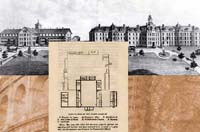
1824
In 1824, New York passed a law requiring the establishment of poorhouses in each established county throughout the state. The poorhouses were financed with the use of a tax placed on county residents' estates. Residents of the poorhouse included the needy and dependent persons of which the disabled could have qualified as both.
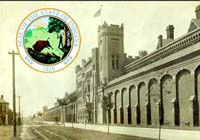
1907
The first Compulsory Sterilization Law was passed in Indiana. Sterilization was made easier with the development of the vasectomy by Dr. Harry C. Sharpe. Even before the law was passed, Dr. Sharpe had been performing illegal sterilizations at the Indiana State Reformatory. Those people who were considered mentally deficient and were confined to state institutions were subjected to the procedure. Several other states followed Indiana's lead by implementing forced sterilization laws.
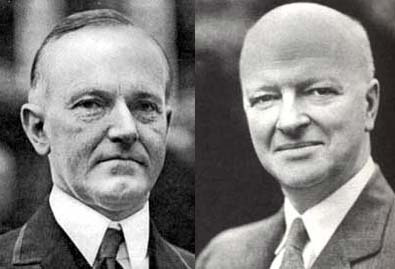
1924
The Immigration Restriction Act was considered to be driven by the eugenic agenda. Harry Laughlin, superintendent of the Eugenics Record Office at Cold Spring Harbor, testified before Congress supporting a eugenics based immigration law. The law was signed in 1924 by President Calvin Coolidge and would not be repealed until 1965. In Coolidge's words, "America must be kept American." There was fear that the mixing of the races, including some Europeans, would lead to the deterioration of American society.
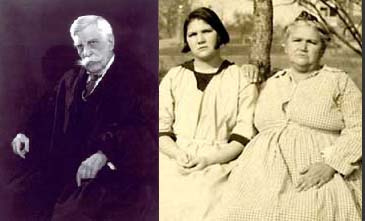
1927
The Buck v Bell Supreme Court Case upholds the compulsory sterilization of defectives. "Three generations of imbeciles are enough" stated Justice Oliver Holmes. In an 8 to 1 decision, the court legitimized the Commonwealth of Virginia's law on sterilization that was not repealed until 1974. The case legitimated eugenic sterilization laws throughout the entire United States.
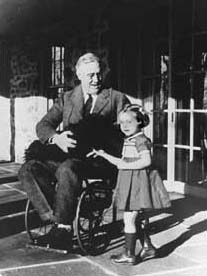
1932
Franklin Delano Roosevelt was elected President of the United States in 1932 and took office the following year. President Roosevelt suffered from post-polio disabilities that forced him to use a wheelchair except when propped up. He contracted the disease in 1921 and had severe paralysis as a result.
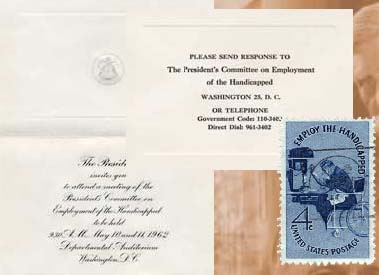
1945
National "Employ the Handicapped Week" was created and signed by President Harry Truman as Public Law 176. The week was established to create more awareness of the possibilities available to employ the physically handicapped. In 1962, "Employ the Handicapped Week" expanded to include all disabilities and was later changed from just one week to a full month in 1988.
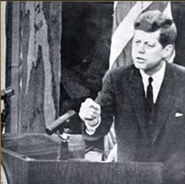
1963
President Kennedy signed the Mental Retardation Facilities Construction Act in 1963. Public Law 88-164 made available federal dollars for the construction of mental retardation research centers, education for those involved with disabled children, and grants for the construction of mental health centers. This law was a result of the findings of the 1962 report from the President's Panel on Mental Retardation.
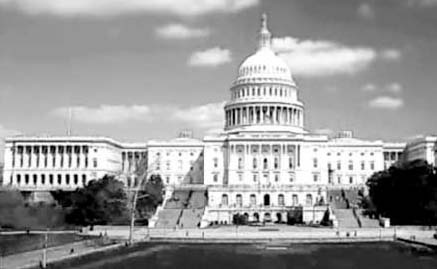
1968
Congress passed the Architectural Barriers Act in 1968. This act declared that any building receiving federal funding from 1969 onward had to be accessible for the disabled. The Architecture Barriers Act is considered one of the first pieces of federal legislation supporting the rights of the disabled.
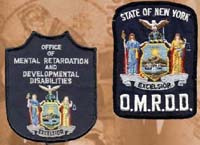
1970
Developmental Disabilities Services and Facilities Construction Amendments were passed in 1970. The amendments gave states extensive responsibilities to establish comprehensive programs to provide services for people with developmental disabilities. It also offered the first legal definitions of developmental disabilities. Grants for interdisciplinary training in higher education were also included for those who provided services to developmentally disabled individuals.

1971
The United States District Court for the Middle District of Alabama ruled in Wyatt v. Stickney, that residents of institutions or state schools have a constitutional right to individual treatment. Disabled persons who live in custodial institutions could no longer be placed in institutions without receiving education or treatment.
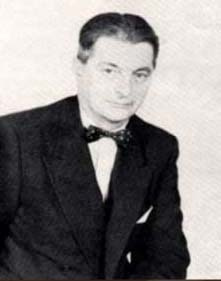
1972
The Pennsylvania Association for Retarded Children brought about a lawsuit, on behalf of retarded children, against the state of Pennsylvania. The association was persuaded by Dr. Gunnar Dybwad, a very active advocate for the right of the disabled, to go ahead with the litigation in United States District Court. PARC v. Pennsylvania resulted in the establishment of rights for disabled children to have access to a free and equal public education.
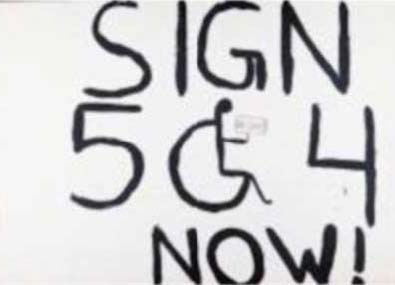
1973
The passage of the 1973 Rehabilitation Act was a large victory for the disability rights movement. The discrimination of the handicapped is addressed for the first time especially in Section 504. Qualified persons seeking employment could not be discriminated against based on their disability. This law would provide the outline for the future Americans with Disabilities Act.
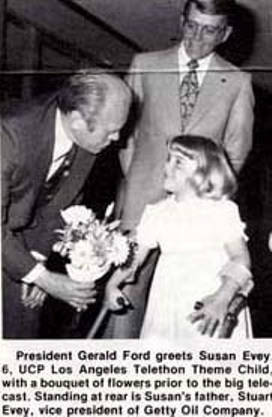
1975
The Education for All Handicapped Children Act, Public Law 94-142, was passed in 1975. This act mandated that the states, with the assistance of the federal government, provide a free and proper education for disabled children regardless of the seriousness of their disability. Included in the act were provisions for a free and appropriate education, individualized education programs with parental involvement, establishment of due process proceedings, and to provide an education in the least restrictive environment.
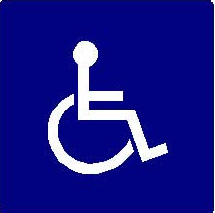
1975
The passage of the Developmentally Disabled Assistance and Bill of Rights Act established a "bill of rights" for individuals with developmental disabilities. This act provided federal funds for programs for the developmentally disabled and a series of rights for those in institutions.
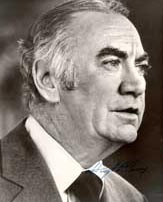
1975
The Willowbrook Consent Decree was signed by New York Governor Hugh Carey. It commits New York State to improving community placement for members of the Willowbrook class action lawsuit, and later, all persons served by the Office of Mental Retardation and Developmental Disabilities.
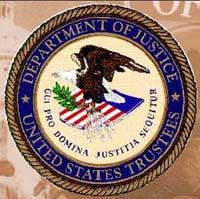
1980
The Civil Rights of Institutionalized Persons Act was passed by Congress in 1980. The Act allowed the United States Justice Department to act on behalf of the institutionalized in civil suits against the states. Civil suits could be brought against a state for violating the rights of institutionalized individuals in facilities for the mentally retarded and mental hospitals.
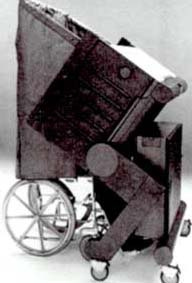
1984
The Voting Accessibility for the Elderly and Handicapped Act, Public Law 98-435, was passed in 1984. Polling places would now be required to be accessible for individuals with disabilities.
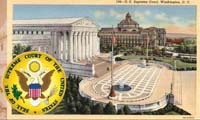
1985
The U.S. Supreme Court in the case of City of Cleburne v. Cleburne Living Center, ruled that zoning laws cannot prohibit group homes from being in a residential area. Cleburne Living Center was denied a special use permit that the court ruled discriminatory under the "Equal Protection Clause" of the Fourteenth Amendment.
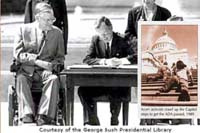
1990
President George H.W. Bush signed the Americans with Disabilities Act in 1990. The ADA provides civil rights protection to disabled American's. Under this legislation, equal opportunity was established for employment, transportation, telecommunications, public accommodations and the state and federal government's services. This act is considered the most wide-sweeping civil rights bill for individuals with disabilities.

1990
The Individuals with Disabilities Education Act passed in 1990. Known as the IDEA, the act was an extension of the Education for All Handicapped Children Act. Through the IDEA the federal government provides monetary assistance to state and local governments for the education of children with disabilities. A right to a free and appropriate education, in the least restrictive environment is again included in this legislation.
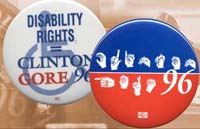
1996
In 1996 the re-election campaign of President Bill Clinton and Vice President Al Gore reached out to disabled voters. President Clinton went on to win his reelection attempt and gained a sizable percentage of votes from individuals with disabilities.
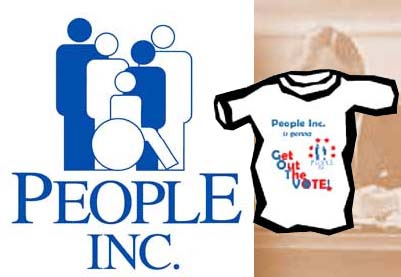
2005
People Incorporated won an award for their "Get Out The Vote" program that encouraged people with developmental disabilities to vote. The initiative aimed to increase the participation of disabled voters.

